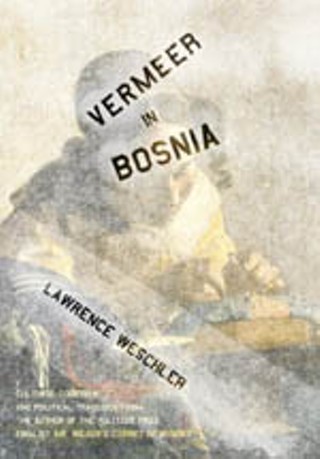Book Review: Readings
Lawrence Weschler
Reviewed by Russell Cobb, Fri., Aug. 20, 2004

Vermeer in Bosnia: Cultural Comedies and Political Tragedies
by Lawrence WeschlerPantheon, 412 pp., $25.95
You might call Lawrence Weschler's most recent collection of peripatetic musings, Vermeer in Bosnia, a series of tangents or digressions, but this would ignore the fact the tangent is often the tale. Like a postmodern Scheherazade (a comparison Weschler invites) fretting over her imminent death at the hands of the Sultan, Weschler spins yarns about everything under the sun – including its curious light on smoggy Los Angeles, the author's hometown.
In his 20 years at The New Yorker, Weschler developed a keen eye for connecting dots we mere mortals can't, or won't, see. The connection between Roman Polanski's disturbed psyche and the enigmatic last scene in Chinatown, the eerie similarity between the look in the eye of a Serbian war criminal and the subject of Vermeer's Girl With a Pearl Earring, Aristotelian ethics and the downfall of Slobodan Milosevic: This, dear reader, is why we need critics!
"The world is already filled to bursting with interconnections, interrelationships, consequences, and the consequences of consequences," the author writes in a preface meant to explain his inability to create fiction. "The web of all those interrelationships is dense to the point of saturation." The trick of criticism, then, is teasing out those interrelationships without coming off as pretentious or overly academic. Weschler achieves this, and writes generous prose that allows the reader to share in the author's serendipitous discoveries.
The best essay in the collection is the title piece, which begins with a horrifying account of the trial of Dusko Tadic, a war criminal accused of forcing prisoners to castrate one another with their own teeth. Weschler asks the president of the court, an Italian judge, how he can listen to such stories all day without losing his mind. The judge responds that he escapes to the Hague's Mauritshuis after work, "'to spend a little a time with the Vermeers.'" Weschler then observes that Vermeer's paintings, "almost uniquely in the history of art ... radiate a sense of perfectly equipoised grace," even though they were created at a time when "all of Europe was Bosnia." This is a digression from the gravitas of Serbian war crimes, perhaps, but with Weschler, half of the fun is getting there.










